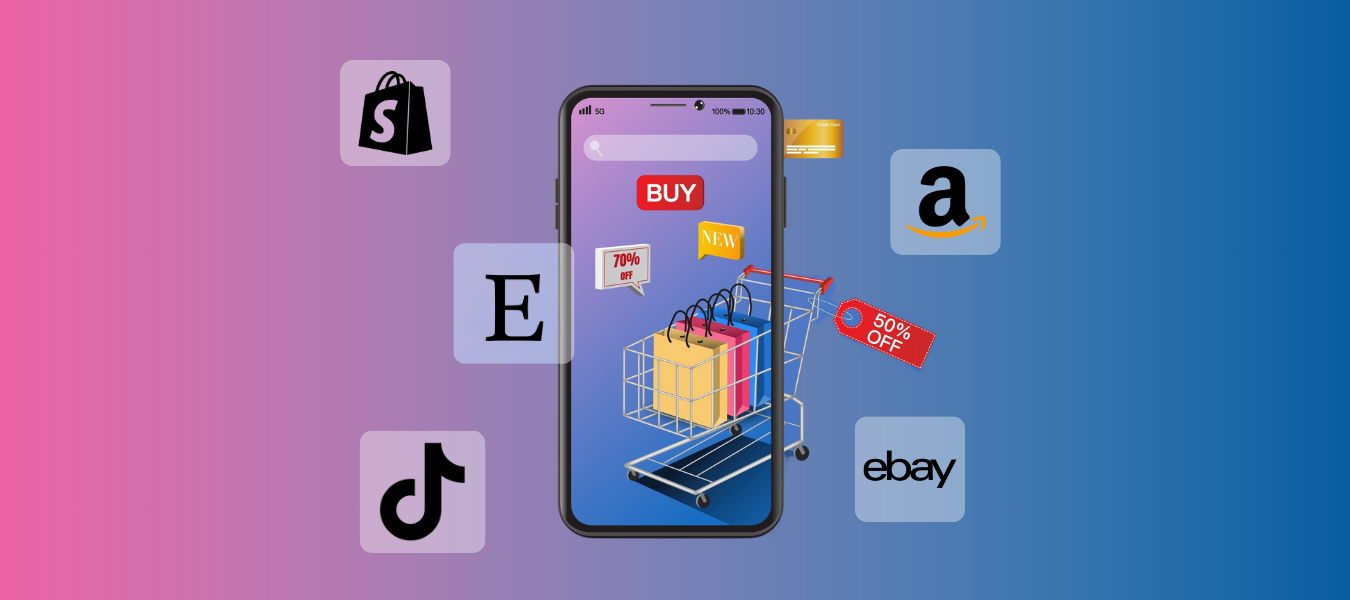



E-commerce is no longer just about having a single online store or relying on one major marketplace like Amazon. Today, the most successful sellers expand their businesses by selling across multiple platforms — a strategy known as multi-platform selling.
Think about it: would you rather set up shop in just one location, hoping customers find you, or have multiple storefronts in busy online marketplaces where millions of buyers are actively searching for products? The answer is obvious. Selling on multiple platforms gives you access to a larger audience, increased sales opportunities, and greater brand visibility.
But let’s be real — managing multiple sales channels can feel overwhelming. Keeping inventory updated, processing orders, and maintaining product listings across different platforms can quickly become a disaster. That’s where multi-channel selling software and automation tools come in, making it easier than ever to manage everything from one place.
In this post we’ll break down everything you need to know about selling on multiple platforms, including:
So, grab a coffee (or a snack), get comfortable, and let’s get into it!
At its core, multi-platform selling (also known as cross listing) means listing and selling your products on multiple online marketplaces, platforms, and channels simultaneously. Instead of relying on just one storefront (like only selling on Amazon or just running your own website), you spread your products across different platforms where different types of buyers shop. For example, you may sell on:
Each of these platforms has its own audience, advantages, and selling dynamics. The more places you sell, the more attention you get on your products, and the more chances you have to make sales.
Let’s say you sell handmade candles. If you list them only on Etsy, you’ll reach an audience that loves unique, handmade goods. But what about the shoppers on Amazon who are looking for candles as gifts? Or the customers scrolling through TikTok who love home decor? By expanding to multiple platforms, you diversify your audience, increase brand recognition, and reduce your dependence on any single marketplace.
Another point — if one platform suddenly changes its rules (hello, unexpected policy changes and seller suspensions), your entire business could take a hit. But if you’re selling across different platforms, you minimize that risk and keep your revenue flowing.
Each marketplace attracts a unique set of buyers. While Amazon shoppers look for competitive pricing and fast shipping, TikTok Shop users are influenced by viral trends and impulse purchases. Selling on multiple platforms ensures that your products are visible to a diverse audience, maximizing your reach and potential sales.
If you only sell on one platform, your business is at the mercy of that platform’s policies, algorithm changes, and marketplace fluctuations. A single suspension, policy change, or technical issue can bring your entire business to a halt. By selling on multiple platforms, you create a safety net, ensuring that one setback won’t shut down your entire operation.
With your products available in more places, customers can purchase them on the platform they trust and prefer, increasing your overall conversion rates. Some buyers might prefer the security of Amazon, while others enjoy the personalization of Shopify or the discoverability of TikTok Shop.
Being active on multiple platforms builds brand credibility. If customers see your products on Amazon, eBay, TikTok, and your own Shopify store, they’re more likely to recognize and trust your brand. This multi-channel presence enhances brand awareness and customer loyalty over time.
Consumer shopping habits are constantly evolving. A few years ago, Amazon and eBay dominated online shopping, but today, platforms like TikTok Shop and Walmart Marketplace are growing rapidly. Selling on multiple platforms keeps your business adaptable and ahead of trends rather than relying on a single marketplace that might decline in popularity.
Now that you know the benefits of multi-platform selling, let’s talk about WHERE else can you sell. Because expanding to multiple platforms doesn’t mean jumping onto every marketplace available. Instead, it’s about choosing the right ones based on your product type, target audience, and business model. Here’s a breakdown of the most important platforms for multi-channel e-commerce:
As the largest e-commerce marketplace, Amazon provides powerful selling tools, including FBA (Fulfillment by Amazon), which takes care of shipping, storage, and customer service for you. With millions of active shoppers, it’s a go-to platform for sellers across nearly every product category. However, Amazon’s high fees and strict seller policies can be challenging, making it essential to diversify beyond just Amazon.
Known for its auction-style listings, eBay is great for selling both new and used products. Whether you’re flipping collectibles, selling refurbished electronics, or listing brand-new inventory, eBay gives you access to a massive global audience with flexible pricing options. Unlike Amazon, eBay’s fees are generally lower, and there’s more flexibility in pricing and branding.
If you want full control over your online store, Shopify is the platform for you. It lets you build a customized website, manage inventory seamlessly, and integrate with multiple sales channels. From secure payment processing to advanced analytics, Shopify is an excellent choice for growing a direct-to-consumer brand.
If your business revolves around handmade, vintage, or unique products, Etsy is your best bet. It’s a go-to marketplace for creatives and small businesses, offering categories like jewelry, home decor, personalized gifts, and craft supplies. Etsy buyers are looking for one-of-a-kind items, making it perfect for artists, designers, and makers.
TikTok Shop is definitely changing the way people shop online. With over 1 billion active users, TikTok is a goldmine for viral products — especially in categories like beauty, gadgets, fashion, and home decor. Unlike traditional marketplaces, TikTok Shop thrives on short-form video content and influencer marketing, making it perfect for brands that understand social commerce trends.
While selling everywhere sounds great, it can get messy fast if you don’t have the right systems in place. Here’s what you need to watch out for and how to solve these problems:
When you sell the same product on different platforms, you need to make sure your inventory updates in real-time. If you sell an item on Amazon, it should immediately show as “sold out” on Shopify and Etsy. Otherwise, you might oversell and disappoint customers.
Solution: Use an inventory management system that syncs across all platforms. This ensures your stock levels are always accurate, no matter where a sale happens.
Each platform has different order processing systems. If you don’t stay organized, you could miss shipping deadlines or confuse customer orders.
Solution: Consider using order management software that consolidates all orders from different platforms into one dashboard. This will help you keep track of shipments and customer service requests more easily.
Every marketplace has its own rules, fees, and policies. For example, Amazon has strict performance metrics, while Etsy focuses more on handmade authenticity. If you don’t follow each platform’s rules, you could face penalties or even account suspension.
Solution: Read each platform’s terms and conditions carefully and keep track of their fees. If managing multiple platforms becomes overwhelming, multi-channel listing software can help automate many tasks.
Every platform has different listing requirements, SEO rules, and optimization strategies. Managing product descriptions, titles, and images across multiple platforms can be time-consuming.
Solution: Use a multi-channel listing tool that allows bulk product uploads and edits across multiple platforms in one place. This saves time and ensures consistency.
Well, now you understand the power of cross listing software. If you want a simple, efficient way to sell on multiple platforms without the hassle, MySellerHub is your answer. Here’s what you get:
Instead of logging into five different platforms, you manage everything from one place — saving time, reducing errors, and growing your business more efficiently. The best part? Mysellerhub is 100% free to use!
If you’re looking to attract a broader audience, increase sales, and future-proof your brand, selling on multiple platforms is the smartest move you can make. It’s not about abandoning your main platform but expanding so that you diversify your income, reduce risk, and reach new customers.
Yes, it can feel like a lot to manage — but with the right automation tools and a smart strategy, multi-platform selling is easier than ever before.
And if you want an all-in-one solution to simplify multi-channel selling, Mysellerhub has everything you need to manage inventory, sync listings, and scale your business across multiple marketplaces.
Try Mysellerhub today and make multi-platform selling effortless.





